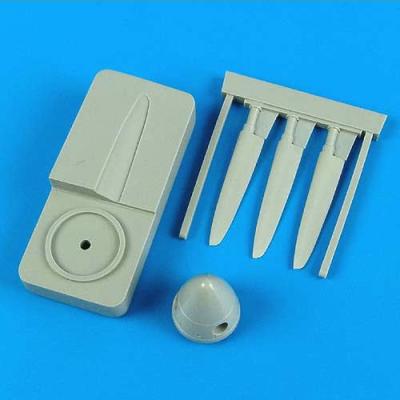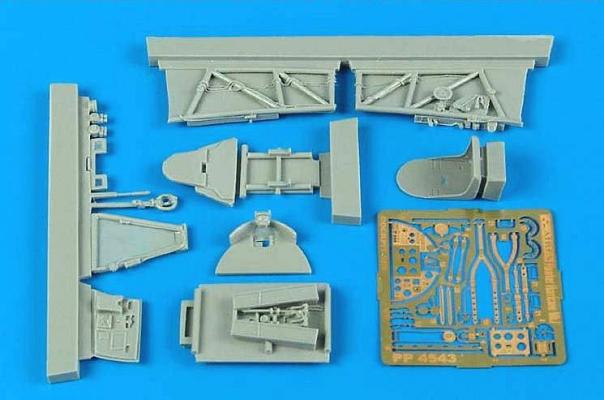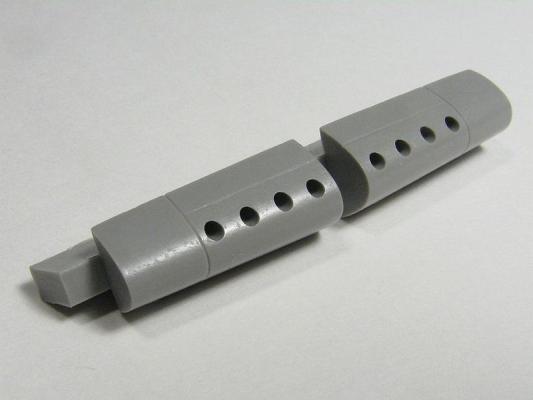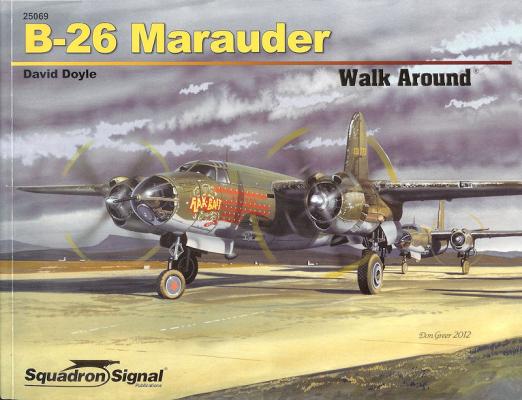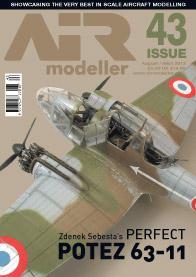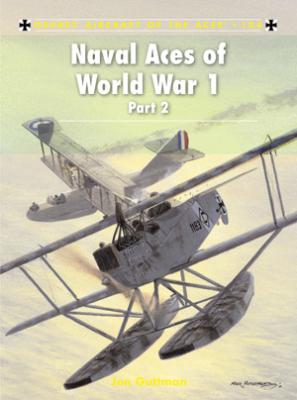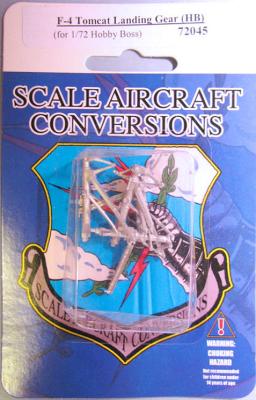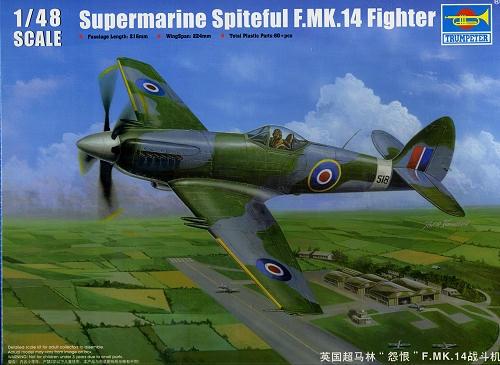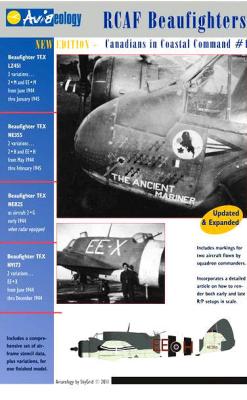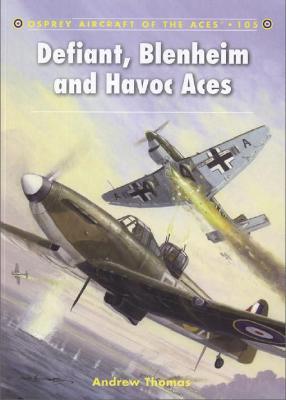QB 48446 (Rotol Spinner) and QB 48447 (Spitfire Spinner), each $6.50
The Italeri Hurricane is getting a lot of attention from the aftermarket manufactures. Quickboost has released two resin Rotol propellers for it. One of the sets has the typical Rotol spinner (more pointed); the other set has a Spitfire spinner (more blunt). I’ve read that during the Battle of Britain there were some Hurricanes fitted with Spitfire spinners.
A nice feature of these aftermarket sets is the provision of a “tool” to ensure the proper pitch of all the propeller blades. After sanding off the back of the spinners, the tool provides you with a “seat” for the spinner, and then you only need to tack the propeller blade in place with a drop of superglue.

